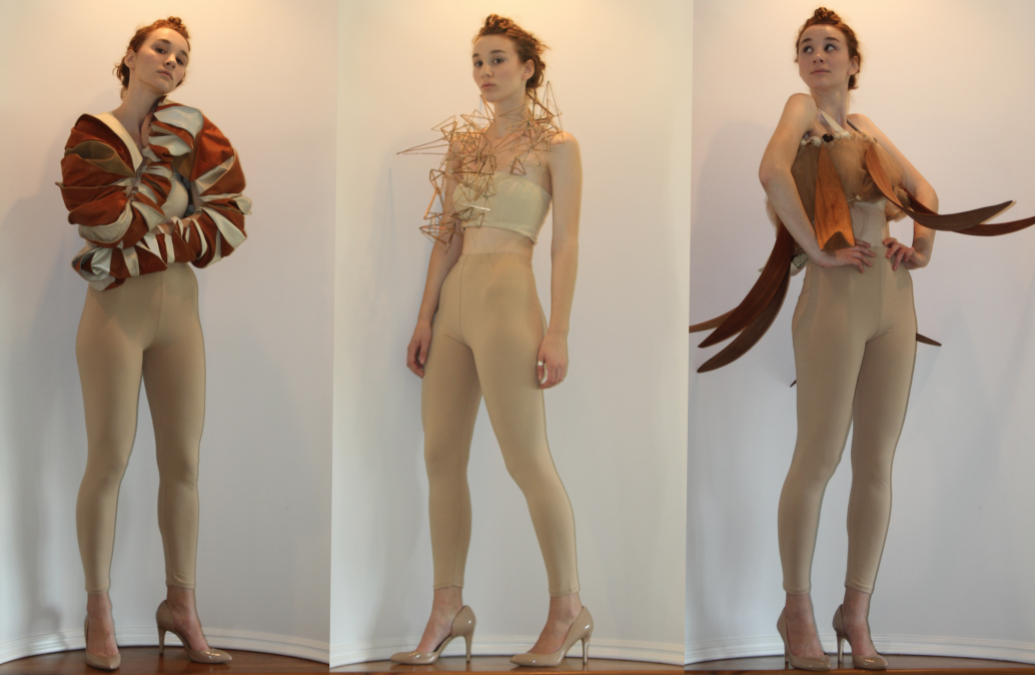Social Innovation Inspires Brown Student To Create Opportunities For Mindfulness

Kate Reed's musical prosthetics pieces are an expression of mindfulness, communication and connection. In this photo, the subject expresses the primary colors of human emotion; sad, mad, and glad.
Through the Swearer Center, I’ve found like-minded entrepreneurs passionate about social innovation and change. As part of the 2018 cohort of the Social Innovation Fellowship, we met on Wednesday nights all semester long, dining together and talking - each of us exploring different avenues of social change. We were led by Swearer Center staff, with occasional guests joining us for lectures and to share new opinions.
We talked deeply about what social change means to us, the costs of creating those changes, and if the change is actually meaningful to society or just ourselves personally. We explored ethical precautions, and how to create powerful social change. We pitched ideas, problems we wanted to solve, potential roadblocks, each of us envisioning our projects and experiencing them coming into focus. When the semester was over, we were each granted $4,000 to take our ventures and ideas to the test.
My project, Musical Prosthetics, is an expression of mindfulness, communication and connection. We are living in a fast-paced world rushing from event to event, multi-tasking at every turn. We are losing touch with ourselves, our bodies, and the people around us. However, art has the power to slow us down, allows us to experience the world around us, and can even shift our reality. When we experience something that we have never seen before it causes us to interact with the people around us, sharing in our wonder and awe.
Musical Prosthetics are a new form of interactive media for enhancing non-verbal communication. Newly created musical instruments are attached to the human body in exoskeletal formations, wired with sensors that create sounds triggered by body movement. Each wearable sculpture explores a different human emotion. As performers interact with each other, their music creates a window into the non-verbal world.
Three Musical Prosthetics express the primary colors of human emotion; sad, mad, and glad. The materials used in this set of three musical prosthetics are leather, bronze, and wood- each chosen and designed to correlate with a specific emotion. The sad prosthetic, made from sewn leather, slumps over the shoulders, turning inward. The mad prosthetic is made from bronze prisms protruding outward in sharp, edgy points. The happy prosthetic has sculpted wood petals; light, joyous, and playful.
The prosthetics are connected to an Arduino sensor paired with the body movements associated with that desired emotion. The sensor is placed somewhere on the prosthetic as it is attached to the wearer's body. The sensor picks up the specific movements from the wearer, and sends the information to a Teensy Arduino. From the Teensy, the information goes into Max MSP where the information is then translated from numbers and data into real-time music and sound.
In live performance, these musical prosthetics command awareness. They are magical and fantastical, each with its own personality yet cohesive as a group. Viewers and performers are drawn into the visual and aural connection, triggering an awareness and mindfulness, strengthening an understanding of the non-verbal world. Musical Prosthetics encourage larger conversations about our movements, our experiences within our bodies, how we communicate, and how it feels to express this wonder to others.
Many thanks to my Social Innovation Fellowship colleagues, the Swearer Center, and to my various coaches and mentors at RISD, Brown, and beyond. Your knowledge, encouragement and support of this project has been incredible. While I’m thrilled with these first three Musical Prosthetics, my mind is racing with ideas and possibilities for the future.
Interested readers and learn more about the process of creating Musical Prosthetics online and view work and the project homepage.
